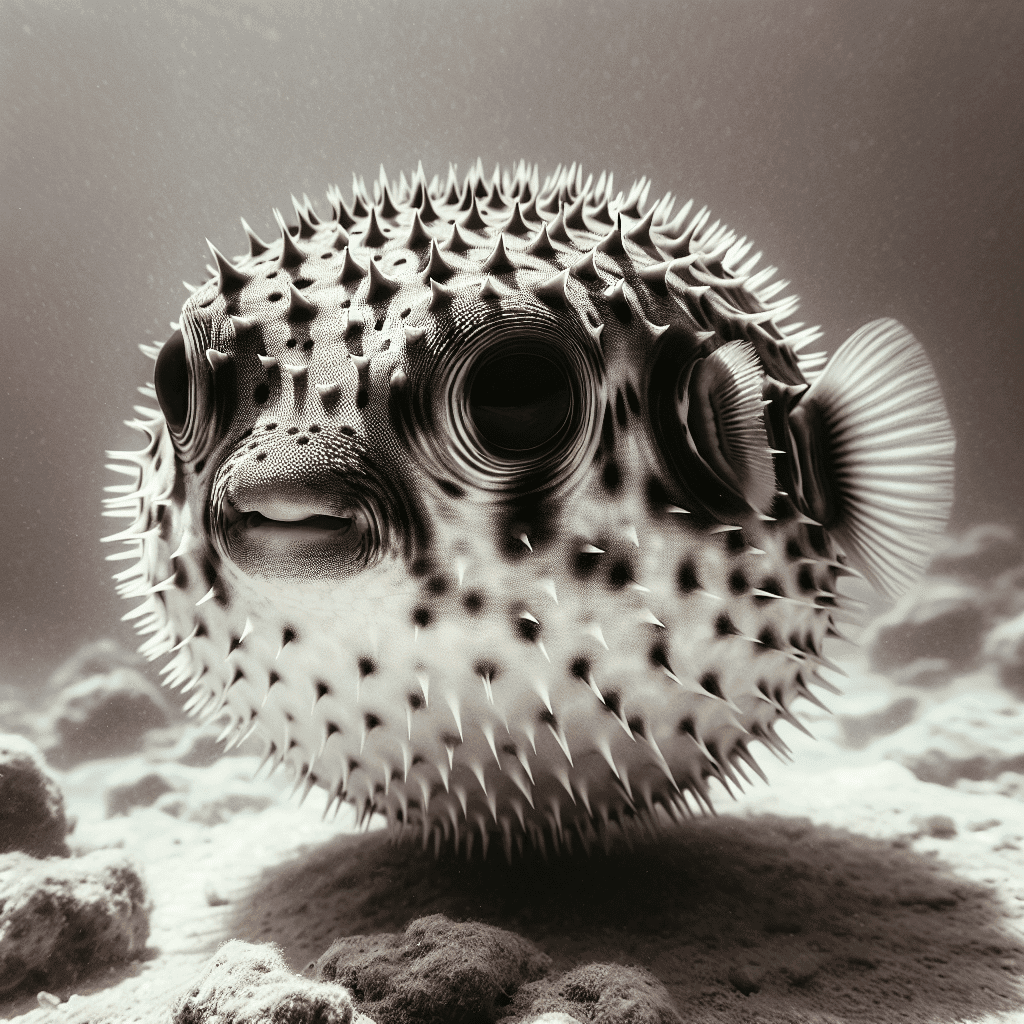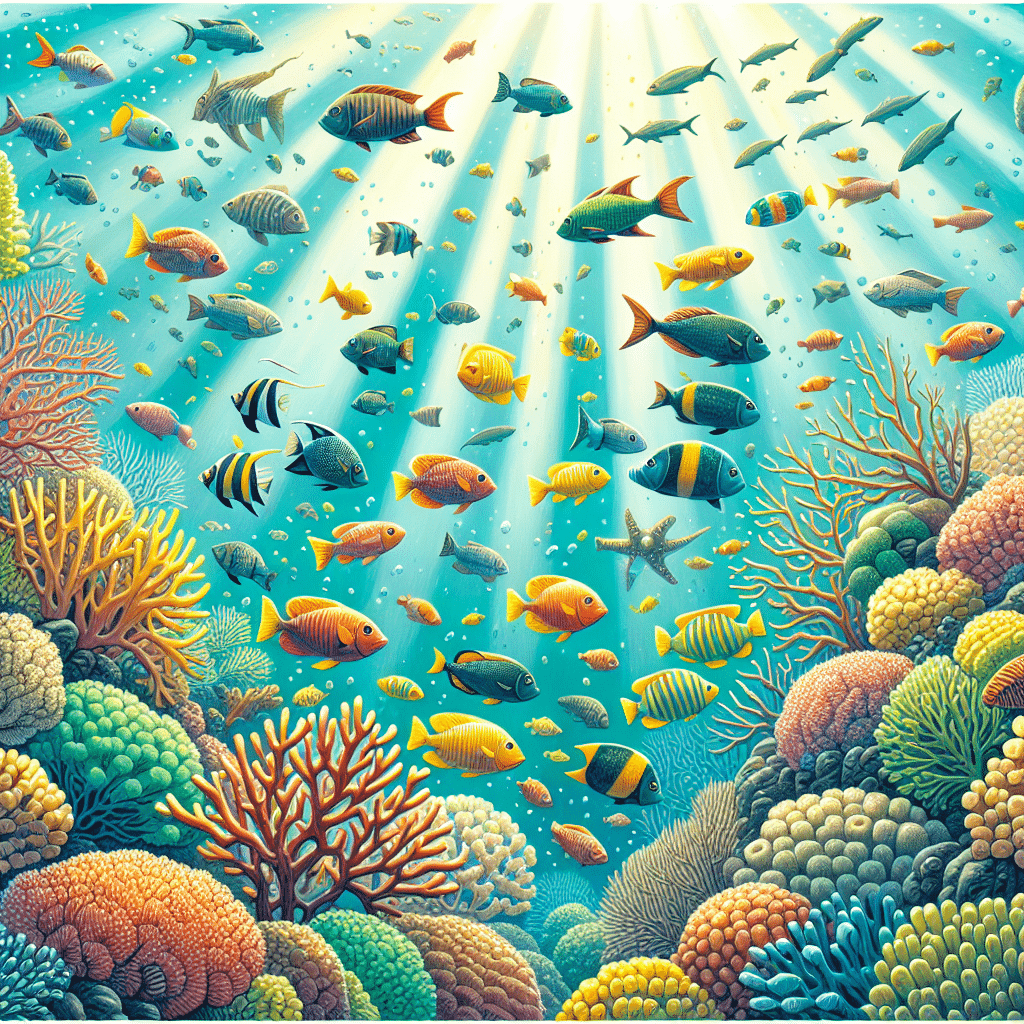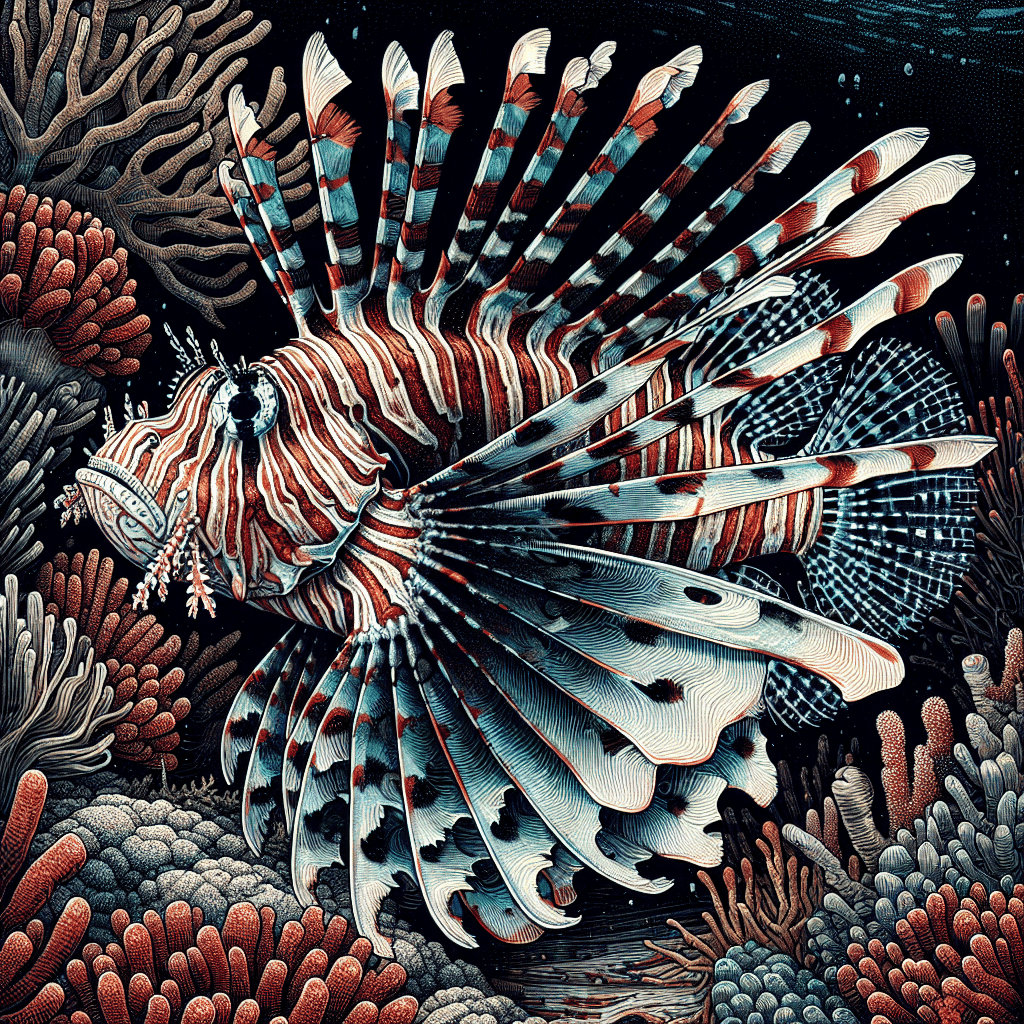The World of Pufferfish
Pufferfish Overview
I find pufferfish to be one of the most fascinating marine creatures out there. With around 200 species spread across 39 different genera, pufferfish come in various shapes and sizes, ranging from just one inch to an impressive three feet long. These fish are not only unique in appearance but also have some interesting characteristics that make them stand out.
Pufferfish are known for their ability to inflate their bodies as a defense mechanism against predators. When threatened, they gulp water (or air) to puff up, making it difficult for larger fish to swallow them. However, they’re not just about defense; they also have a unique texture and taste that some find appealing, which leads to their use in certain culinary dishes.
Habitat and Distribution
Pufferfish prefer warm, shallow tropical and subtropical ocean waters. They typically inhabit coral reefs, seagrass beds, and mangroves, where they can find food and shelter. While most pufferfish are marine species, there are also some that thrive in brackish and freshwater environments. In fact, about 35 species are exclusively found in freshwater habitats, mainly in regions like South America, Africa, and Southeast Asia.
Here’s a quick overview of their habitats:
| Habitat Type | Description | Examples of Species |
|---|---|---|
| Marine | Warm, shallow ocean waters | Various tropical puffers |
| Brackish Water | Mixture of salt and freshwater | Northern Puffer |
| Freshwater | Rivers and lakes, mainly in tropical areas | Freshwater puffers |
The Northern Puffer, for instance, can be found along the Eastern Seaboard of the U.S. up to Newfoundland in Canada. This species inhabits protected areas with brackish water and interestingly, it does not produce tetrodotoxin, making it a safer option for consumption (Earth.com).
It’s also worth noting that human activities have led to the introduction of non-native pufferfish species in various regions. For example, a non-native pufferfish species in the eastern Mediterranean Sea has created challenges for local fishermen and even caused fatalities.
Understanding where pufferfish thrive helps me appreciate the importance of their habitats, especially when considering how to care for them in a reef tank setting. If you’re looking to add a pufferfish to your aquarium, knowing their preferred environment is key to ensuring their health and well-being.
Pufferfish Toxicity
Pufferfish are fascinating creatures, but they come with a serious warning label. Understanding their toxicity is crucial for anyone considering keeping them in an aquarium or trying them in the culinary world.
Understanding Tetrodotoxin
Tetrodotoxin (TTX) is the potent toxin found in pufferfish, porcupinefish, and sunfish. This toxin is concentrated in the liver, gonads, intestines, and skin of these fish. TTX works by blocking voltage-gated sodium channels, which can lead to paralysis. Symptoms of TTX poisoning can hit rapidly and include weakness, dizziness, tingling sensations, and nausea. In severe cases, it can lead to respiratory distress or failure, and death can occur within 2 to 6 hours after ingestion.
Here’s a quick overview of TTX characteristics:
| Characteristic | Description |
|---|---|
| Toxicity Level | Highly toxic, with fatal doses as low as 2 mg |
| Affected Organs | Liver, ovaries, intestines, skin |
| Symptoms of Poisoning | Weakness, dizziness, nausea, respiratory failure |
| Time to Onset | 2–6 hours after ingestion |
Deadly Consequences
The consequences of TTX poisoning can be dire. In Japan, pufferfish, known as fugu, are considered a delicacy despite the risks involved. Chefs must undergo extensive training to prepare fugu safely, as improper preparation can lead to fatalities. The toxin’s concentration varies in different organs, with the liver and ovaries being particularly dangerous.
For a 70-kg adult, the minimum lethal dose is estimated to be around 2 mg, which shows just how potent this toxin is. Acute poisoning can occur with doses as low as 0.28 to 2.94 mg. The importance of understanding TTX cannot be overstated, especially for hobbyists considering pufferfish for their aquariums or culinary enthusiasts looking to experience fugu (ScienceDirect).
If you’re interested in other types of marine fish that are safer alternatives for reef tanks, consider exploring options like clownfish or tang, which are vibrant and generally non-toxic.
Pufferfish Behavior
Pufferfish are fascinating creatures with some unique behaviors that help them navigate their underwater world. Understanding their defensive mechanisms and adaptations is essential for any fish tank enthusiast.
Defensive Mechanisms
One of the most remarkable features of pufferfish is their ability to inflate when threatened. They can fill their elastic stomachs with large amounts of water (and sometimes air) to blow themselves up to several times their normal size. This makes them much harder for predators to swallow. In addition to inflating, many pufferfish species also possess sharp spines on their skin, which serve as an additional deterrent against potential threats.
| Defensive Mechanism | Description |
|---|---|
| Inflation | Fills stomach with water or air, increasing size significantly. |
| Spines | Sharp protrusions that deter predators. |
| Toxicity | Some species have potent toxins that can be lethal. |
Predation and Adaptations
Despite their unique defenses, pufferfish do have natural predators. For instance, tiger sharks and sea snakes are known to prey on them. Tiger sharks are scavengers that can eat almost anything, including the less agile pufferfish. Sea snakes, part of the cobra family, can also hunt pufferfish in warmer waters.
Interestingly, not all predators are affected by the toxins found in pufferfish. Species like tiger sharks and certain sea snakes can consume them without any detrimental effects. This is due to their adaptations that allow them to handle the toxins that would be lethal to most other animals.
In summary, pufferfish have developed various adaptive strategies to protect themselves from predation, making them a captivating topic for anyone interested in marine life. If you’re keen on exploring more about marine fish, check out our section on marine fish to learn about other incredible species like the lionfish and the triggerfish.
Human Interaction with Pufferfish
Culinary Delicacy
Pufferfish, known as fugu in Japan, is considered a luxurious treat. It’s quite fascinating how something so dangerous can also be a culinary delight. Only trained and licensed chefs are allowed to prepare this dish, as they must carefully remove all the poison sacs to prevent fatalities. The preparation of fugu is not just about cooking; it’s an art form that requires skill, precision, and extensive training.
Despite containing high amounts of tetrodotoxin (TTX), which is 1,200 times more poisonous to humans than cyanide, many people seek out pufferfish for the unique experience it offers. It’s not just about the taste; consuming fugu can induce a state of euphoria in diners, making it a sought-after experience for adventurous food lovers. Some of the prized species include the grass puffer (Takifugu niphobles) and the black-backed puffer (T. stictonotus) due to their exquisite flavor (SeaWorld).
| Fugu Species | Description |
|---|---|
| Grass Puffer | Takifugu niphobles, known for its delicate flavor. |
| Panther Puffer | T. paradalis, often used in fugu dishes. |
| Black-backed Puffer | T. stictonotus, prized for its taste. |
Regulation and Safety Measures
Given the potential dangers associated with eating pufferfish, strict regulations are in place, particularly in Japan. Fugu chefs undergo rigorous training and must obtain a license to ensure they can safely prepare the dish and minimize the risk of poisoning. The liver and ovaries of pufferfish contain the highest concentrations of tetrodotoxin, and even small amounts can be fatal (ScienceDirect).
To illustrate the seriousness of the toxin, the minimum lethal dose for humans is estimated to be around 2 mg, with acute poisoning possible at doses as low as 0.28–2.94 mg for an average adult. This makes the preparation of fugu not only a culinary challenge but also a matter of public safety. As a fish tank hobbyist, it’s crucial to be aware of these safety measures if considering keeping pufferfish in your aquarium. Pufferfish can be fascinating additions to marine environments, but their care and feeding require careful attention to their unique needs.
If you’re interested in learning more about other types of marine fish that might be suitable for your reef tank, check out our articles on marine fish and various species like clownfish and tang.
Threats to Pufferfish
Environmental Challenges
Pufferfish face several environmental challenges that threaten their survival. Pollution is a significant concern, impacting the quality of water where these fish live. As pufferfish primarily consume algae, the health of their food source directly affects them. Pollution can lead to a reduction in algae quality and availability, making it harder for pufferfish to thrive. Additionally, habitat loss due to changing ocean temperatures and human activities further exacerbates these issues. Some species of pufferfish are even considered vulnerable due to these factors, although most populations remain stable (National Geographic Kids, Mom.com).
| Environmental Threats | Impact on Pufferfish |
|---|---|
| Pollution | Reduces food quality and availability |
| Habitat Loss | Diminishes living space and breeding grounds |
| Changing Ocean Temperatures | Affects overall health and adaptability |
Overfishing and Pollution Concerns
Overfishing poses a significant threat to pufferfish populations. While many populations were stable as of 2011, continued human consumption and fishing practices can lead to a decline. Overfishing disrupts the natural balance of marine ecosystems, affecting not only pufferfish but also the species that coexist with them. Additionally, the introduction of non-native pufferfish species in various regions due to globalization can create competition for resources and lead to unforeseen consequences, such as fatalities among local fishermen.
| Overfishing Concerns | Possible Outcomes |
|---|---|
| Excessive Catching | Decreased population numbers |
| Competition with Non-native Species | Resource scarcity and ecosystem imbalance |
Awareness of these threats is crucial for fish tank and reef tank hobbyists. By understanding the challenges pufferfish face, I can better appreciate their needs and work towards creating a sustainable environment for them in my aquarium. For more information on other marine fish, check out our section on marine fish.
Tetrodotoxin Research
Toxicity Studies
Tetrodotoxin (TTX) is a potent neurotoxin found in pufferfish and other marine organisms like porcupinefish and sunfish. It can lead to severe nerve and muscle paralysis by blocking voltage-gated sodium channels. The toxin is produced by symbiotic bacteria, primarily from the genera Pseudomonas, Pseudoalteromonas, and Vibrio.
Research has revealed varying concentrations of TTX in different pufferfish species. For example, in Lagocephalus sceleratus captured in the Western Mediterranean Sea, TTX concentrations were about 2 mg/kg, with the highest levels found in the muscles, ovaries, liver, skin, and gastrointestinal tract. The lethal dose for humans is estimated to be as low as 2 mg, with symptoms of poisoning including weakness, dizziness, nausea, and respiratory distress (ScienceDirect).
| Pufferfish Species | TTX Concentration (mg/kg) | High Concentration Areas |
|---|---|---|
| Lagocephalus sceleratus | 2 | Muscles, Ovaries, Liver, Skin, GI Tract |
Implications for Aquatic Food Safety
The presence of TTX in pufferfish has significant implications for food safety, especially in culinary practices where pufferfish—known as fugu in Japan—is considered a delicacy. The rigorous training and licensing of fugu chefs are essential to minimize the risk of poisoning, given the high levels of TTX found in specific organs like the liver and ovaries.
Moreover, studies have indicated the occurrence of TTX in European bivalve mollusks, linking the toxin’s production to specific marine bacteria. This discovery has led to the development of new methods for assessing TTX levels in seafood, ensuring that consumption of marine life remains safe. As a fish tank or reef tank hobbyist, understanding these safety measures is essential when considering which marine fish to keep in your aquarium. For more information on other marine species, check out our articles on marine fish and pufferfish.



